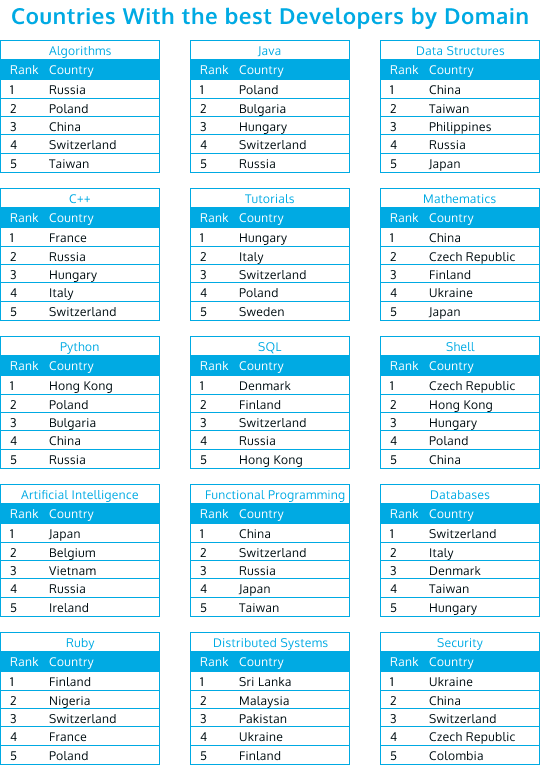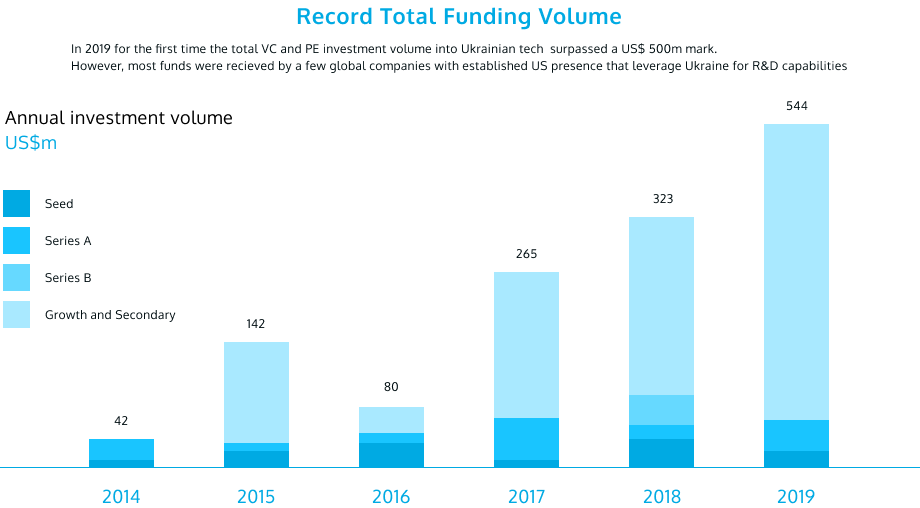How could such a strong IT industry grow in Ukraine?
To Ukrainians, their country’s industrial and technological strengths are evident as proven by advanced technologies created by Ukrainian scientists for space exploration, intercontinental ballistic missiles, and the largest aircraft in the world, Mriya (the “Dream”).
However, few people outside of Ukraine are aware of these achievements, mostly because Sputnik and other Sovtech (Soviet technology’s own term) feats are mostly associated with the long-gone USSR. And the few who know usually are benefiting from accessing this hidden gem of technical experts, hiring engineers and software developers from Ukraine.
Correctly placing credit where it’s due, we’ll review the sources of Ukraine’s past engineering and technical legacy, the current state of affairs, and risk predicting the future.
A journey into the Past: Ukraine’s Engineering Origins
To this day up to a third of Ukraine’s exports consist of iron and steel industry products. Owing to the world’s largest reserves of commercial-grade iron ore and metallurgical coal deposits nearby, starting from the 19th Century parts of Central and Eastern Ukraine became industrial towns. Afterward, they became some of the most important centers of Soviet heavy industry and engineering in the 20th Century.
If winged flight owes much to Wright brothers, dirigible airships to Ferdinand von Zeppelin, then propeller aviation’s founding father is Igor Sikorsky. A native of Kyiv and a graduate of Kyiv Polytechnic Institute (that now bears his name), Sikorsky has left Ukraine in the aftermath of World War I and has implemented a number of his inventions in the field of propeller aviation (helicopters etc.) in the United States. Sikorsky has never returned to Soviet Ukraine, but he was a product of an industrial tradition that over the years has produced more followers.
When the Soviet Sputnik reached low-Earth orbit in 1957 shocking the world, little was known about the humble engineer by the name of Sergey Korolev who made the flight possible. Born 100 km West from Ukraine’s capital Kyiv in Zhytomyr, he was educated in Odesa, Kharkov, and Kyiv – all centers of strong technical education to this day. Later Korolyov was instrumental in the human-rated space rocket program and USSR’s intercontinental ballistic missile efforts.

The key role of mathematics and engineering focus in Soviet education has first gained notoriety in the NATO Policy Brief of 1959, which emphasized the world-leading quality of the mathematical and technical education, then considered key disciplines for global communist domination by the USSR.
Ukraine, located in the center of the Eastern Bloc, had been a strategic site of the industrial, military and technological complex of the Soviet Union, resulting in a strong scientific and educational infrastructure to support it.
World’s largest cargo plane “Mriya” (originally designed to carry a reusable Soviet space shuttle) built in Kyiv by Antonov company is an interesting case study in engineering cooperation: unable to buy the best at the time jet engines from Rolls Royce in 1985, its engineers have ordered its equivalents to be built by Motor Sich, an industrial design and production company in southern Ukraine.
Other industrial and engineering centers include Dnipro (formerly Dnepropetrovsk), Kharkiv and several others. Dnipro is known for Yuzhmash, an engineering company noted for pioneering Soviet ICBMs and now producing Antares launch vehicles for NASA’s commercial cargo delivery to the International Space Station.
A look into the presence: Engineering and Technology of Ukraine in 2020
Currently, the demand for software developers from Ukraine is so high that salaries for some of the professionals are approaching Western European levels. This is largely due to the solid understanding of mathematics and linear logic that originate in Ukrainian schools, highly supporting parents, and an asset in building a digital nation.
After the collapse of the Soviet Union in 1991, the general tendency for most of the former 15 “republics” has been to maintain the educational foundations of the Union with the gradual introduction of national and modernization adjustments.
While the world is no longer in a nuclear arms race, a solid mathematical and engineering foundation has helped Ukrainian engineers and technically-minded professionals to shift focus to software development and related digital technologies.
Still, Ukraine’s economy is overall in a very difficult situation. The country is the last on the list of European nations in terms of GDP per capita. What’s a disadvantage to some is also an exceptional incentive for many young people to seek careers in the relatively better-paying IT industry.
In 2019 Ukraine counted about 200,000 IT professionals working mostly in the outsourcing industry for European and American customers bringing in about 5 billion USD in export revenue (growing 20-25% annually). This places the Ukraine first in Europe in terms of ICT exports. 29,000 new specialists enter the field every year, meaning that the industry is intensifying and moving up the outsourcing value chain.

So where do all these freshly minted software developers come from?
In general, Ukraine has a relatively large percentage of people who receive higher education: 79% of high school graduates obtain a university degree, so it is no surprise that most IT professionals have a diploma. At the same time, most employers no longer consider university-level education mandatory, as technical skills, experience, as well as knowledge of English are prized much more.
Both students and experts still see value in higher education but the very nature of knowledge work requires constant learning, making the bureaucratic and static formal education only a possible foundation, but not a decisive factor.
According to software developer surveys, 87% of Ukrainians working in IT have a university diploma while at the same time only 56% have majored in computer science or related fields. Some of the difference is explained by the fact that fully 70% of those surveyed are engaged in self-study and 57% regularly undergo training.
This is where a dynamic private education steps in. Numerous coding academies and training centers provide both the basic skills needed to join the prized ranks among software development professionals, as well as refresher and advanced training courses that are regularly required by professionals who keep up with the latest developments.
Official statistics on private academies are almost non-existent, but we would highlight the following:

- The best training programs are self-rated by participants and serve as a reliable selection mechanism by future employees.
- These academies can be either paid or free of charge, but all usually require passing exam grades on the basic skills on subjects taught.
- Driven by ever-growing demand, the number of software courses is still growing rapidly. The Developers of Ukraine study lists 73 schools and training centers, which have trained 43,868 students in 2016-2019 in 24 cities of Ukraine and there are reasons to believe that the actual numbers are higher in reality.
- The question of the quality of such courses is acute for the students, as employers usually independently assess the skills of the potential employees through interviews and test assignments.
- A large number of people self-taught programmers is also a phenomenon to consider, as most employers in Ukrainian rely less on formal credentials compared to work experience and testable skills.
According to the conclusion of the international recruiting expert group called HackerRank, the Ukrainian developers are 11th in quality of their work, ahead of their German, American and Indian colleagues. The Ukrainians are especially successful in programming security issues (1st place in the World), as well as in the 4th place in mathematics and distributed computing.
Based on all the above it is possible to make a conclusion that Ukrainians, similarly to other Eastern Europeans, succeed in IT mainly due to a very solid foundation in mathematics and exact sciences starting in school, amplified by the appreciation of these skills in society, becoming a key prerequisite for the mastery of programming.
Given the salary differences within the local economy and export-oriented IT industry, the choice for young graduates becomes clear.
The Future: Ukraine’s Digital Crossroads
As employer preference shifts more towards marketable skills and motivation – rather than just a degree – IT professionals of Ukrainian origin have a few strengths to offer to the world.
In the early days of Ukrainian IT, the industry was fueled by young engineers who saw programming as a chance for a better life, studying books, undergoing training, knowing there is no job security unless they maintain marketability. Can this motivation endure and help Ukraine transition from exporting brainpower to building products and services for the global market from Ukraine?
From 2020 the most promising areas that show where Ukraine’s tech is headed can be glanced in the IT Outsourcing industry, within R&D centers of global companies opening offices in Ukraine and the homegrown startup ecosystem.
The Future of Outsourcing in Ukraine

Ukraine’s modern IT industry owes much to the outsourcing industry, the brains for export. In 2020 the software company reviewer Clutch lists 330+ Ukrainian outsourcing companies charging from $25 to $300 hourly rates.
As competition and local dollar salaries increase, Ukraine will lose the price advantage in lower-level IT outsourcing to more price-competitive Asian, South American, and African rivals.
Most of the companies operating today are still receiving funding, so investors are confident they have a future or that they will be a good acquisition target for the portfolio of global outsourcing providers.
The Future of Global Research and Development in Ukraine
Already global companies that have “tested” Ukrainian software developers (via the experience of working through an outsourcing service provider) are taking the leap and opening their own software development centers.
During 2019 companies such as Google, Reddit, Wix, and many others have opened or expanded their R&D centers in Ukraine.
“We chose Kyiv because there are a lot of technically skilled engineers who are interested in product development. They aspire to do more than only coding. We need people who are ready to contribute to the product,” according to Senior User Experience Designer from Reddit.
Some industry experts emphasize that a stumbling block to this trend may be an “overheated market” – that is, the lack of specialists to meet further demand, so in the short term it is not likely that software developers are to be found at bargain salary levels.
The Future of Startups in Ukraine
The best confirmation that Ukrainian IT is on the right track is a stable, close to an exponential growth of investments in startups, primarily by venture capital and private equity. While funding volumes are still tiny at the beginning of 2020, the overall trend is positive.
At the moment, few IT startups originating from Ukraine are truly world-class, but at least a couple are officially “unicorns” (valued at or above $1 billion). However, the trend is encouraging one, with some of the most prominent global investment firms already being active investors in Ukrainian startups.


The cultural technical heritage, very good education and strong interest of Ukrainians in the IT industry have made it strong. Challenges remain in the future, but the international interest of investors and the willingness of specialists to learn give hope for a rosy future



